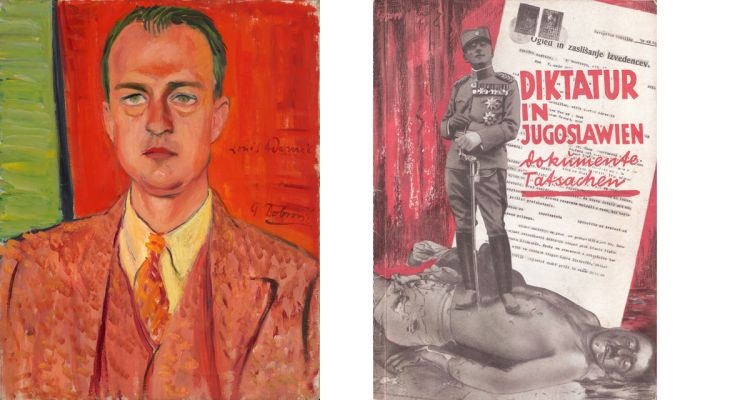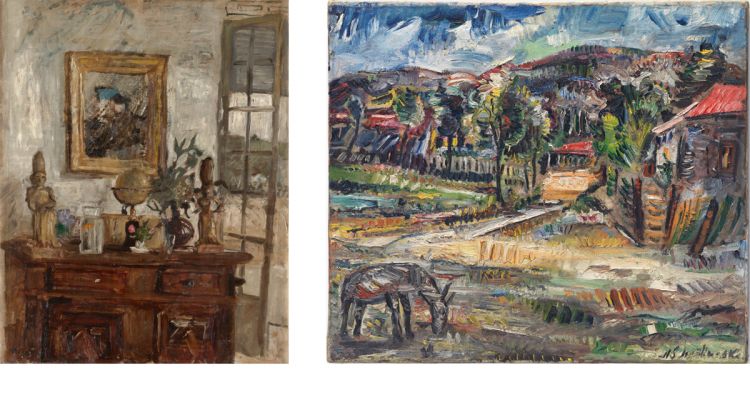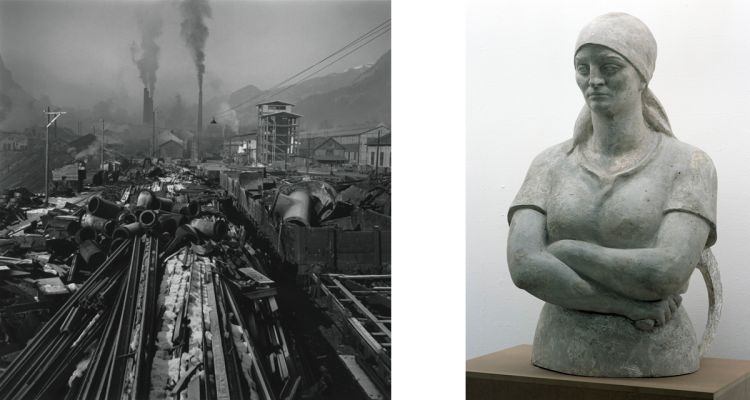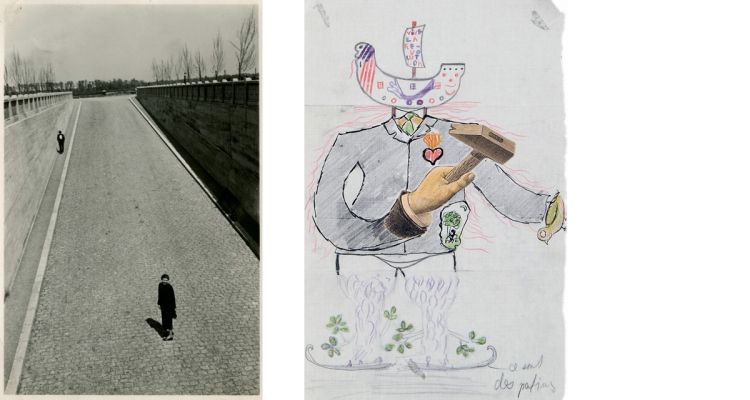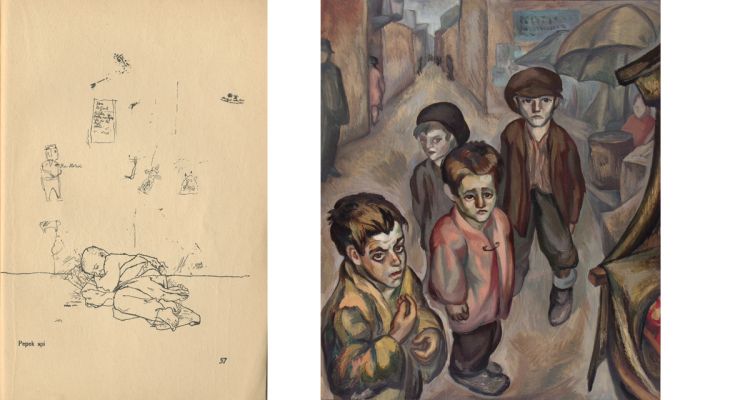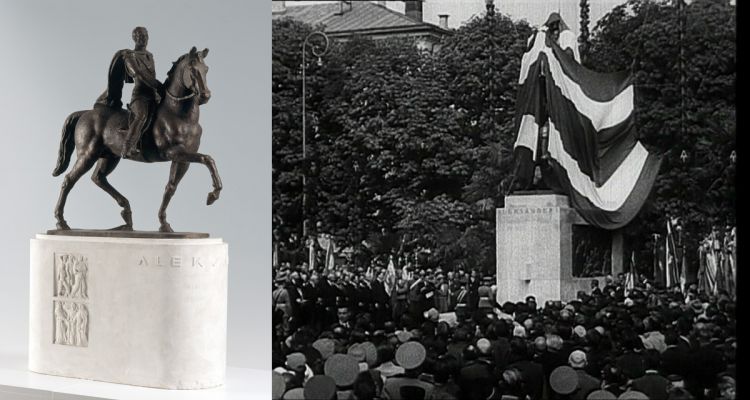On the Brink: The Visual Arts in the Kingdom of Yugoslavia (1929–1941)
International Survey Exhibition
Exhibition Curator & Project Manager: Marko Jenko
Opening: 25 April 2019, 8 p.m.
Duration: 25 April – 15 September 2019
Moderna galerija (Museum of Modern Art), Ljubljana
The Honorary Patron of the Exhibition is the President of the Republic of Slovenia Borut Pahor.
Selection of Artworks, Other Materials and / or Catalogue Contributions: Ana Bogdanović, Jana Intihar-Ferjan, Marko Jenko, Dejan Kosanović (in memoriam), Lovorka Magaš-Bilandžić, Lidija Merenik, Marja Nikolčić, Kiril Penušliski, Jože Pirjevec, Alenka Pirman, Petar Prelog, Daniel Rafaelić, Božo Repe, Bojana Rogina, Dejan Sretenović, Lara Štrumej, Ivana Udovičić, Zdenko Vrdlovec, Asta Vrečko, Beti Žerovc
Exhibition Concept and Design: Marko Jenko
Special Displays: Dejan Sretenović (Belgrade Surrealism), Alenka Pirman (Louis Adamič)
International Film Program (in Moderna galerija's Auditorium): Daniel Rafaelić, Zdenko Vrdlovec. Special acknowledgement goes to the Yugoslav Film Archive in Belgrade.
The international exhibition of the visual arts in the Kingdom of Yugoslavia, this year's main event in Moderna galerija, provides an overview of painting, sculpture, printmaking, drawing, photography, and film from the time the king's dictatorship was set up (6 January 1929) to the beginning of World War II on Yugoslav soil (April 1941). This period, also due to the dictatorship, heavily influenced the so-called conflict on the artistic Left.
The thread running through the exhibition is – in addition to the art scene – the view of Yugoslavia as presented by Louis Adamič in his travelogue The Native’s Return, published in 1934 in the United States, where it became an instant bestseller, reprinted many times. It was forbidden in the Kingdom of Yugoslavia. The Native’s Return enables us to juxtapose the “objective” and “subjective” in the question of what actually is context. Adamič reveals the Kingdom of Yugoslavia – also through his encounters with artists such as sculptor Ivan Meštrović, writer Miroslav Krleža, and painter Petar Dobrović, as well as the king, one year before his assassination in Marseilles – as a country on the brink – a country of stark contrasts, caught between old, premodern customs and the grip of capitalism, with the premonition of its imminent end, also in a broader European and global context. But this turbulent pre-war period, when everything was coming apart at the seams, with different and conflicting ideas of Yugoslavism, from the king's integral Yugoslavism to more egalitarian views of society, also represents the time when the first official shared history of art of all the Yugoslav nations emerged, a history associated with the art historian and curator Milan Kašanin, the Venice Biennale (1938, 1940) and the international cultural policies of the Kingdom of Yugoslavia.
______________________
“Here I shall merely state that when I arrived in Yugoslavia, the country had been for over three years under the ruthless military dictatorship of King Alexander, which I knew but vaguely before I came there. I did not know what that really meant. I was not interested. I did not fully realize till months later that dictatorship meant that thousands of people were in prisons because they believed in such socio-political concepts as democracy, liberty, and economic justice, and dared to talk and act accordingly; that every city swarmed with secret agents; that newspaper, magazine, and book editors and publishers were under strict censorship; that public meetings, except those organized by henchmen of the dictatorial regime, were forbidden; and so on.
Anyhow, that, roughly, very roughly, was the political situation in Slovenia, in the whole of Yugoslavia, when I came there, although I did not see it at once. For three years and longer nearly everyone there had been living under an oppressive and suppressive government. I met people who whispered most of the time. Afraid to talk aloud in restaurants and coffee-houses or in the streets, they had been whispering ever since the dictatorship was established; now they whispered even when they asked me what kind of trip I had had or how I liked spring weather in Slovenia. At first I did not know what the matter with them was.”
Louis Adamič, The Native's Return, 1934
______________________
The exhibition displays the work of more than 130 artists, archival and library materials from more than 50 public and private collections from ex-Yugoslav countries. Most of the works from abroad are shown in Slovenia for the first time. The exhibition On the Brink is also juxtaposed with art in the post-World-War-II context. In the Museum of Contemporary Art Metelkova, a part of Moderna galerija since 2011, the exhibition Southern Constellations: The Poetics of the Non-Aligned (from March 7) presents us the art and movement of the Non-Aligned of which Yugoslavia was a constitutive part. Moderna galerija’s program for 2019 is thus marked by the context of Yugoslavia or two Yugoslavias.
The exhibition On the Brink is accompanied by an international film program in Moderna galerija's auditorium, an educational program, and an extensive, richly illustrated catalogue.
Check our website for the upcoming international film program and public program. English guided tours with the curator Marko Jenko or Moderna galerija's guides can be arranged in advance. Please contact: izobrazevanje@mg-lj.si or +386 1 2416804 (Dana Terzić).
The exhibition and catalogue are supported by the Ministry of Culture of the Republic of Slovenia.
General sponsor: Mercator.
